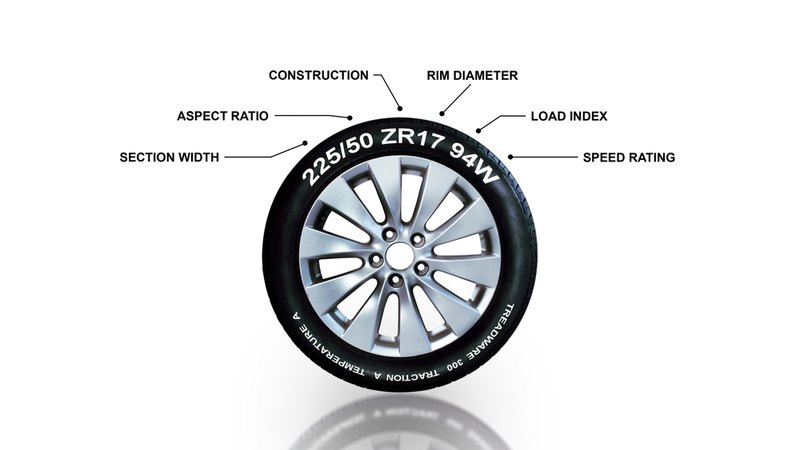
The Only Comprehensive 101 Buying Tires Guide You’ll Ever Need!
When picking new tires, make sure you understand what you’re getting
Whether you're a seasoned driver or a first-time car owner, you must understand the ins and outs of tire buying before you head for a reliable local tire shop – this buying tires guide offers just that! The right tire provides traction, stability, and control on various road surfaces and weather conditions.
However, tires wear down as time passes, affecting their performance.
Thus, knowing when to replace them is vital, as mentioned in tire guides, is an understatement.
But you must think beyond replacing worn-out ones; instead, you must optimize your driving experience. Tire types, sizes, and tread patterns offer unique benefits, and you must explore these aspects when looking for tips on how to pick tires.
Let’s get started!
How To Choose Tires? A Brief Overview
Don’t be overwhelmed by having to choose new tires for an affordable price – you need something that works best for you, has an optimal size, and offers unparalleled performance.
So, how to choose tires?
Start by seeing which size and type works best for your vehicle. Also, consider whether you need something that works well for all seasons or offers high-performance handling. Performance ratings, tread patterns, and traction features are also important considerations.
If you’re asking yourself, “What are the best tires,” try to see what works best for you rather than looking for a one-fit-all deal (i.e., ideal SUV tires differ from ideal sedan tires).
Also, compare prices to find the best value.
Inspect Your Tires Before Buying
Once you figure out when to replace the tires, assess your options via the tire recommender (you can also visit the store in person).
Next, let’s see how to select tires.
As soon as you’ve got your options lined out in front of you, start by inspecting the tires for any bulges, cuts, or irregularities in the tread. Next, look for the DOT (Department of Transportation) number on the sidewall – the last four digits are the tire's manufacturing date (make sure it is recent).
New tires should have consistent tread depth across the entire surface – you can (and should) use a tread depth gauge to verify. Lastly, verify the branding and model information on the tire sidewall to ensure the tires match the brand, model, and specifications you intended to buy.
Hopefully, this covers “how to select tires?”
How To Read A Tire Sidewall The Right Way
The process of reading the tire sidewall may seem daunting, but it’s not all that complex once you get the hang of things. Be sure to read the sidewalls of your original equipment tires to know what type of replacement tires to get.

Wondering how to know what tires to buy? Reading the tire sidewall – here’s how:
- Tire Size: Just look at the alphanumeric code in a format like P215/65R16 on your original equipment tires. Here "P" refers to a passenger vehicle tire, whereas "LT" refers to a light truck tire. The following number, in this case, 215, is the tire width in millimeters. The number after the slash, in this case, 65, is the aspect ratio. Next up, "R" indicates a radial tire construction of your original equipment tires. And the last number, i.e., 16, refers to the diameter in inches.
- Load Index: This numerical code refers to the maximum load capacity of your original equipment tires; this number is usually found after the tire size.
- Speed Rating: Following the load index, this alphabetic symbol indicates the maximum safe speed for the tire. This rating can be "S," which means that the tire can safely go up to 112 mph, "H" (for up to 130 mph), or "V" (for up to 149 mph).
- Treadwear Grade: This number is an estimate of the auto tire's lifespan; the higher, the better.
- Traction Score: This rates the tire's ability to grip the road under wet conditions; grades range from AA (highest) to C (lowest).
- Temperature Score: This score (A, B, or C) represents the tire's resistance to heat.
- Manufacturer Date Code: This is the tire's production date, and it appears as a four-digit number. The first two digits represent the week, and the last two indicate the year of manufacture for your original equipment tires.
Compare Tire Types: Choose The One That’s Best For You!
Let’s take a look at the different types of tires to see which one suits your needs the best:
All-Season Tires:
Pros:
- Work well in a wide range of weather conditions
- They can tread over light snow
- Comfortable and quiet ride
- These types of car tires offer a good tread life
Cons:
- Not so effective in extreme winter conditions
- It can’t be compared to dedicated summer or winter tires
- Lacks in some performance capabilities
Winter/Snow Tires:
Pros:
- Excellent traction
- Superior handling even in cold and snowy conditions
- Shorter braking distances on snow and ice
- Enhanced safety for winter driving
Cons:
- Don’t perform as well on dry and warm roads
- Comparatively less tread life
- These types of car tires require seasonal tire swaps
Performance Tires:
Pros:
- Enhanced handling
- Better cornering
- Superior responsiveness
- Superior grip and traction on dry surfaces
- These types of car tires are ideal for high-performance vehicles
Cons:
- Don’t perform as well in wet or cold conditions
- Shorter tread life
- Higher cost
- Less comfortable on rough roads
- Sometimes louder
Summer Tires:
Pros:
- Optimal performance in warm conditions
- Excellent traction
- Better cornering capabilities
- Enhanced responsiveness
- These types of car tires offer Better braking
Cons:
- Ineffective in cold conditions
- Reduced traction on wet/snowy surfaces
- Can’t be used year-round
All-Terrain Tires:
Pros:
- Good for both on-road and off-road driving
- Better traction on various terrains
- Can tread over gravel, mud, and sand
- Longer tread life
Cons:
- Less aggressive off-road performance
- Reduced on-road comfort
- These types of car tires can be noisy
Mud-Terrain Tires:
Pros:
- Maximum off-road traction
- Works well in muddy, rocky, and challenging terrains
- Self-cleaning
- Increased durability
- Works well against off-road hazards
Cons:
- Reduced on-road comfort
- Can be noisy
- Longer braking distances on paved surfaces
- These types of car tires have lower tread lives
Touring Tires:
Pros:
- Comfortable
- Quiet ride
- Ideal for daily commuting
- Works well for long-distance travel
- Good traction
- Higher stability on highways
- Longer tread life
- These types of car tires offer better fuel efficiency
Cons:
- Sacrifices some performance capabilities
- Less effective in extreme weather
- Not suitable for aggressive driving
- It can’t be used for off-road driving
New Tires VS. Used Tires – Which One To Choose?
Now comes another important choice – new vs used tires.
Once you've got an answer to questions like "What kind of tires do I need," you can move on to buying tires. New tires are in pristine condition, offer better performance, are safer, and have a longer tread life. Of course, the only downside is that they cost more, especially for high-performance models.
In contrast, used tires are more affordable, and you can contribute to sustainability by cutting down on waste. However, these tires have an unknown history and may thus pose potential safety and performance issues. They also have a shorter tread life and oftentimes no warranty coverage.
When choosing between new vs. used tires, decide what matters most to you – choosing the superior or more affordable option.
Choose The Right Tires Like A Pro – Reach Out To Creamery Tire Inc.
You don’t have to scratch your head in confusion if you don’t know much about choosing tires.
Reach out to Creamery Tire Inc to find out how to pick tires or for more specific advice. We offer unparalleled service and a truly exceptional experience to our customers – this sets us apart from other tire shops. Transparency is at the core of our business. We also prioritize your convenience by offering a hassle-free experience.
You don’t need an appointment – just reach out to Creamery Tire Inc for choosing tires and an unmatched service!
FAQ
What driving habits negatively impact a tire’s life?
Your driving habits can indeed have an impact on a tire's life. Such habits include excessive speeding, aggressive driving, hard braking, abrupt acceleration, driving over potholes (or curbs, other road hazards, etc.), and improper tire maintenance.
What is the correct air pressure for your tires?
The correct air pressure for your tires depends on the manufacturer's recommendations. Read the vehicle owner's manual for accurate information in this regard. This will ensure optimal performance, handling, and tire longevity.
Can you mix tire types?
No, that’s not a good idea. Using a set of tires with the same tread pattern, size, and construction is best. This way, you’ll get consistent performance and handling. Mixing all-season and winter tires (and so on) can compromise overall safety.
Can you mix tires with different speed ratings?
No. Mixing tires with different speed ratings can result in uneven performance and handling. This will compromise the overall safety rating of the tires. Your best bet is to use a set of tires with the same speed rating.
